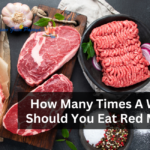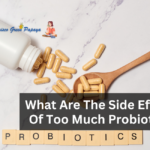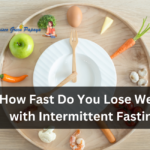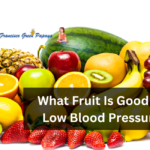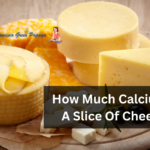Acid reflux is often referred to as gastroesophageal reflux disease(GERD), is a common digestive ailment caused by the reflux of stomach acid into the esophagus.
This might cause discomfort, heartburn, and other symptoms. Making dietary changes is one of the most effective strategies to manage acid reflux.
This article will look at what foods you can eat to aid with acid reflux symptoms.
Foods To Consume
If you suffer from acid reflux, including these foods in your diet may help:
When compared to other foods, they lower the risk of acid reflux.
Aid in the neutralization of gastric acid.
Assist you in managing acid reflux symptoms.
None of these foods can cure GERD or acid reflux, and what works for one person might not work for another. Your final decision will be determined by how meals affect you.
Vegetables
High fat and added sugar foods may raise the risk of acid reflux.
Vegetables are low in fat and sugar by nature.
Good alternatives include:
- Green beans
- Broccoli
- Asparagus
- Cauliflower
- Leafy greens
- Potatoes
- Cucumbers
To add taste, use spices such as turmeric or cinnamon. It is important to note that adding butter, spices, lemon, ketchups, and salad dressings may enhance the risk of acid reflux.
Ginger
Ginger has natural anti-inflammatory effects, and many people use it to treat indigestion, nausea, and other gastrointestinal issues.
One of the reasons for this is that ginger promotes stomach emptying. In other words, it promotes the passage of food through the gastrointestinal tract beyond the stomach.
Add grated or sliced ginger root to meals or smoothies or drink ginger tea to relieve symptoms.
However, ginger might cause heartburn in certain people. Try a small amount at first to see if it works for you.
Oatmeal
Oatmeal is a high-fiber whole grain. Oats absorb stomach acid as well, making acid reflux less common.
A diet high in fiber has been linked to a lower risk of acid reflux. Whole grain breads and brown rice are also high in fiber.
Fruits That Are Not Citrus
Melons, bananas, apples, and pears all contain important nutrients and are less likely to cause reflux symptoms than acidic fruits like oranges.
Fruits are less likely to trigger acid reflux as a snack than foods with additional fats and sugar, such as chocolate.
Fruits also include fiber, which can help you feel fuller for extended periods of time.
Seafood And Lean Meats
Lean meats, such as turkey, fish, chicken, and shellfish, are lower in fat and therefore less likely to trigger acid reflux symptoms than fatty meats.
Grill, broiled, roasted, or poached them.
What Are Some Additional Lean Protein Foods?
Beaten egg whites
Egg whites have a high protein content and a low fat content. Poached eggs are delicious.
Egg yolks and fried eggs are heavy in fat and may cause reflux.
Fats That Are Good For You
The body requires fats to function, but it is critical to choose the proper fats and utilize them sparingly.
Healthy unsaturated fat sources include:
- Avocados
- Walnuts
- Olive oil
- Flaxseed
- Sesame seed oil
- Sunflower seed oil
Animal fats and fats added to processed meals are less likely to produce acid reflux. Avoid deep-fried meals like fries and donuts.
Drinks
Choose nonacidic drinks over ones containing alcohol, sweets, or caffeine.
Among the options are: Plant-based milks, herbal teas, carrot and other nonacidic vegetable juices.
Worst Reflux Foods
Anything greasy, acidic, or excessively caffeinated should be avoided in general. The following foods are on the list of the worst foods for acid reflux:
Coffee And Tea
Caffeinated beverages, such as coffee and tea, worsen acid reflux. Choose caffeine-free teas.
Carbonated Beverages
Carbonated beverages cause the bubbles in your stomach to expand, increasing pressure and pain. Choose between plain water and decaf iced tea.
Chocolate
Chocolate has a trifecta of acid reflux issues: caffeine, fat, and cocoa.
Peppermint
Don’t be deceived by its reputation for stomach calming; peppermint is an acid reflux trigger.
Grapefruit And Orange
Citrus fruits’ high acidity relaxes the esophageal sphincter and exacerbate symptoms.
Tomatoes
Avoid marinara sauce, ketchup, and tomato soup as well, as they are inherently strong in acid.
Alcohol
Although alcohol relaxes the sphincter valve, it also increases acid production in the stomach.
Fried Foods
Fried foods are among the worst foods for reflux. Skip the french fries, onion rings, and fried chicken and instead cook at home on the grill or in the oven.
Snacks At Night
Avoid eating anything in the two hours before going to bed. In addition, instead of two to three large meals per day, try eating four to five smaller meals throughout the day.
Eating Habits For GERD
Changes in eating habits, in addition to specific meals, can assist to prevent recurring occurrences of heartburn and acid reflux.
- Consume smaller and more frequent meals.
- After eating, do not lie down. This means no naps immediately following lunch. Gravity helps keep acid in the stomach, where it belongs, whether you’re standing or sitting.
- Eat nothing three to four hours before going to bed. As a result, no late suppers or midnight nibbles.
- Avoid intense activity for several hours after eating. A vigorous activity can cause acid to enter your esophagus.
- If you’re taking medicine to help regulate your symptoms, occasionally having a “trigger” food is usually fine. However, you should avoid items that used to induce heartburn.
Dietary management of acid reflux can dramatically reduce symptoms and enhance overall quality of life. You can enjoy meals without the agony of acid reflux by eliminating trigger foods and integrating stomach-friendly selections.
Thanks for reading. I hope you find it helpful.

